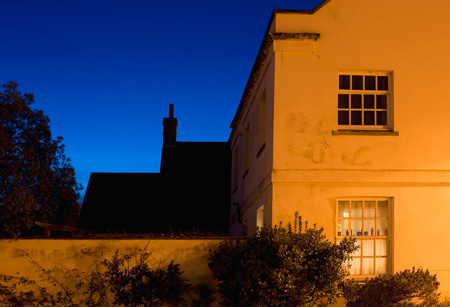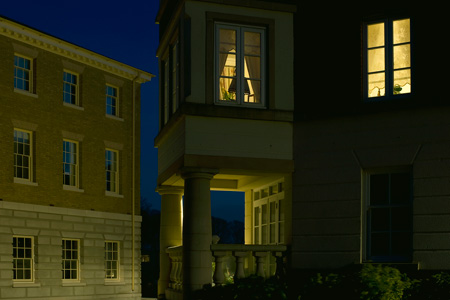Poundbury Village: Urban space and Lived space.
April 1, 2011 § Leave a comment
I’ve always been interested in the dynamics between Poundbury residents and those of Dorchester, Dorset. One steeped in its Roman history the other attempting to create an instant site of fake history in emulating a traditional Dorset village. Those that choose to live amidst the new builds do so as a compliant offering of their personal lives. Those that work there appear to have a dissimilar compliance as they are utilizing opportunities purely for financial gain.
Poundbury is built as a museum with its rules and codes of design; A dream village – a new urban vision of Prince Charles’s. Its new builds hold visual characteristics organised to emulate a quintessential British rural village. I would assume that those who choose to reside here are compliant parties to the museum’s functioning, as at least initially they accept these codes in order to settle in the area. Living within a prefabricated community, akin to stage sets I aim to question how the residents have changed or will alter the prescriptive character of the area; will they modify it by their individual values and behaviour?
I am examining how their individuality can be imprinted upon the geographical space that is ‘Poundbury’ and whether in the long term it will be a space formed by the often intransigent values of individuals or will order be maintained by what is often regarded as the big brother ethics of the Duchy. These images captured at twilight hint at the lived space of individuals resonating with their own identities, but also illustrate the uncanny feeling of the Duchy always watching over the residents; maintaining the prescriptive order.
Elephant and Castle part 2: memory
January 18, 2011 § Leave a comment
From Judith Jones
I remember the housing estates and area around The Elephant and Castle as a grey dull one even in its relatively new state in the late 1970’s. As young nurses we were allowed to apply for one of the council flats on the housing estates; and some of us did. It wasn’t just that they were dreary and dull from the aesthetic of the modernist structures, but when visiting friends you were on your own.
This was a predominantly black area and those flats where friends lived having come to London from the country were well aware of the racism against white people in the late 70’s. Never the less I often used to go to the shopping centre, walking from the bus stop down endless slopes and ramps all identical in their grey metal railings, the weather and pollution hadn’t had the chance to attack the structures yet. The bleakness of the place seemed almost formulaic; it was part of the plan. Under cover of the centre I felt I could hide; from work and life, I was okay.
I haven’t returned to the area since but suspect that even if in a negative sense it would be more colourful; time will have placed its mark and left a scene more atmospheric than the grey identical buildings I remember in the 70’s.






